27 start with C start with C


Dumbarton Oaks houses the largest collection of Byzantine lead seals in the world, with approximately 17,000 specimens. Volume 7 of the ongoing series of Dumbarton Oaks catalogues presents a distinct part of the collection: 572 anonymous seals bearing sacred images on both sides. The seals, almost all previously unpublished, are fully illustrated and accompanied by a detailed commentary that provides transcriptions of the identifying sigla. This volume represents the first attempt to analyze this group of seals chronologically and typologically.
The depictions of Christ, the Virgin, and a remarkably wide array of saints and narrative scenes offer rich and untapped material for scholars interested in Byzantine piety and culture. Discernible trends within this body of seals help to track the popularity of various saints and the changes in devotional images over time. The variety of these images, enhanced by reference to examples in other collections, will also enable scholars to compare the renderings of holy figures on lead seals to those appearing in other Byzantine religious images.





The vast collection of 17,000 Byzantine lead seals in the Harvard collections has long been recognized as an important source for the study of the Byzantine provinces. This volume, the first in a series of catalogues of geographical seals, covers the Empire’s western territories and its possessions North of Thessaly.
The sections begin with a short essay on the region’s location and history. Each seal is illustrated and is accompanied—where appropriate—by full commentary regarding the specimen’s date, biographical information on its owner, peculiarities of orthography, and special features of iconography. These small seals are a large contribution to historical geography, the evolution of the Byzantine provincial administration, prosopography, development in the Greek language, and decorative vogues.
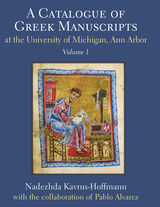
A Catalogue of Greek Manuscripts at the University of Michigan, Ann Arbor is a comprehensive, fully illustrated catalogue of the largest collection of Greek manuscripts in America, including 110 codices and fragments ranging from the fourth to the nineteenth century. The collection, held in the Special Collections Research Center of the University of Michigan Library, contains many manuscripts from Epirus and the Meteora monasteries built on high pinnacles of rocks in Thessaly. Nadezhda Kavrus-Hoffmann has based the manuscript descriptions on the latest developments in the fields of paleography and codicology, including the newest recommendations of the Institute for Research and History of Texts in Paris. The catalogue includes high-resolution plates of all the manuscripts, allowing researchers to compare the entries with other Greek manuscripts around the world. This catalogue contains a trove of fascinating information related to Byzantine culture that will be available for the first time to scholars working on various disciplines of the humanities such as Classical and Byzantine Studies, Art History, Medieval Studies, Theology, and History.
This is the first volume of a projected two-volume set. Volume 2, also by Nadezhda Kavrus-Hoffmann, will contain descriptions of remaining Greek manuscripts in the Library’s collection, starting with Mich. Ms. 59 and ending with Mich. Ms. 238, for a total of 53 manuscripts and 8 fragments. Both volumes will have the same format – catalogue entries for each manuscript together with extensive illustrations. The publication date for Volume 2 has not been established.
The publication of this book has been made possible through the generous support of Carl D. Winberg, MD.



The final volume in the series, this catalogue follows the general plan of volumes II–IV but differs from them in its use of the sylloge format for the catalogue proper. The collection of Palaeologan coins at Dumbarton Oaks is by far the largest that exists, and the field is one in which great advances have been made over the last half-century. This volume supersedes the previous accounts of Palaeologan coinage, and is definitive in its field.
Part I includes the introduction, appendices, and bibliography, while Part II continues with the catalogue, concordances, and indexes.

The fourth in a series of five catalogues, this volume’s sections have a more extensive treatment, featuring imperial costume and regalia, their importance in coin designs; the coordination, control, and methods of coin production; and an excursus on the main issues of the years around 1204. The introductions to each reign have also been expanded to take account of the historical and numismatic complexities of the period, and many more specimens from outside Dumbarton Oaks have been illustrated, offering a greater degree of coverage.
This volume is in two parts. Part I covers the reigns of Alexius I to Alexius V (1081–1204), and Part II covers the emperors of Nicea and their contemporaries (1204–1261).

The 12,000 coins in the Dumbarton Oaks Collection and the Whittemore Collection at the Fogg Art Museum form one of the greatest specialized collections of Byzantine coins in the world. The catalogue, edited by Alfred R. Bellinger and Philip Grierson, publishes the majority of these coins, dating between 491 and 1453, in five volumes.
The third volume in this catalogue is in two parts. Part I examines Leo III to Michael III (717–867) and Part II covers the period between Basil I and Nicephorus III (867–1081). Continuing the practice established in volume two, an extensive general introduction treats the historical background, the monetary system, mints and mint activity, and types and inscriptions, while the introduction to each reign covers chronology, main features of the coinage, and types issued by mint.

The 12,000 coins in the Dumbarton Oaks Collection and the Whittemore Collection at the Fogg Art Museum form one of the greatest specialized collections of Byzantine coins in the world. The catalogue, edited by Alfred R. Bellinger and Philip Grierson, publishes the majority of these coins, dating between 491 and 1453, in five volumes.
The second volume in this catalogue is in two parts. Part I examines Phocas and Heraclius (602–641) and Part II covers the period between Heraclius Constantine to Theodosius III (602–717). The extensive introduction treats the historical background, the monetary system, mints and mint activity, and types and inscriptions. Each reign also includes a longer introduction that covers chronology, main features of the coinage, and types issued by mint.

The 12,000 coins in the Dumbarton Oaks Collection and the Whittemore Collection at the Fogg Art Museum form one of the greatest specialized collections of Byzantine coins in the world. The catalogue, edited by Alfred R. Bellinger and Philip Grierson, publishes the majority of these coins, dating between 491 and 1453, in five volumes.
The first volume in the catalogue covers the coins of Anastasius I through Maurice, and includes a history of the collections.

Some of the books, such as those from the libraries of Philip the Good and Anne of Brittany, are beautifully illuminated. But the collection also includes an unusual array of "typical" medieval books, chosen not for their beauty but for their paleographical, codicological, and textual interest. Such codices include an eleventh-century Carthusian monk, and numerous books of hours adapted for feminine use. Paul Saenger has painstakingly identified the text, illumination, physical structure, and provenance for each of the more than 200 books in the collection to provide an exemplary guide to literate culture in the late Middle Ages.
This catalogue, carefully researched and handsomely illustrated, will be an invaluable resource for historians, art historians, paleographers, bibliographers, and collectors.

This catalogue highlights the fifty-two sculptures in the Byzantine Collection at Dumbarton Oaks. The objects range from the third-century BC miniature portrait head of a Ptolemaic emperor to the sixteenth-century lindenwood “Queen of Heaven” by Tilmann Riemenschneider.
These sculptures are not representative of any one culture or period, but rather are characteristic of the Blisses’ wide-ranging tastes and extraordinary connoisseurship. About a quarter of the objects are Greco-Roman in date, and nearly two-thirds of the remainder are Late Antique, predominantly limestone carvings from Early Byzantine Egypt. Sculpture from the Middle Byzantine period is very rare, making the four pieces in this collection especially significant.
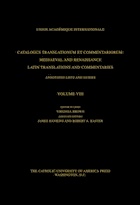
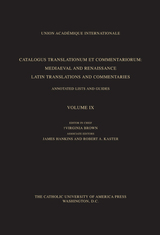
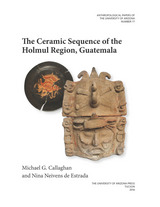
The Ceramic Sequence of the Holmul Region, Guatemala illustrates the archaeological ceramics of these prehistoric Maya sites in a study that provides a theoretical starting point for answering questions related to mid- and high-level issues of archaeological method and theory in the Maya area and larger Mesoamerica. The researchers’ ceramic sequence, which uses the method of type:variety-mode classification, spans approximately 1,600 years and encompasses nine ceramic complexes and one sub-complex. The highly illustrated book is formatted as a catalog of the types of ceramics in a chronological framework.
The authors undertook this study with three objectives: to create a temporal-spatial framework for archaeological sites in the politically important Holmul region, to relate this framework to other Maya sites, and to use type:variety-mode data to address specific questions of ancient Maya social practice and process during each ceramic complex.
Specific questions addressed in this volume include the adoption of pottery as early as 800 BC at the sites of Holmul and Cival during the Middle Preclassic period, the creation of the first orange polychrome pottery, the ideological and political influence from sites in Mexico during the Early Classic period, and the demographic and political collapse of lowland Maya polities between AD 800 and AD 830.
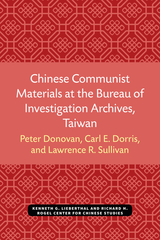
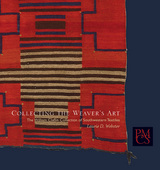
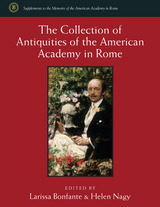
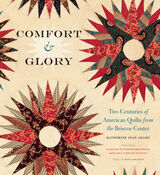
Quilts bear witness to the American experience. With a history that spans the early republic to the present day, this form of textile art can illuminate many areas of American life, such as immigration and settlement, the development of our nation’s textile industry, and the growth of mass media and marketing. In short, each quilt tells a story that is integral to America’s history.
Comfort and Glory introduces an outstanding collection of American quilts and quilt history documentation, the Winedale Quilt Collection at the Briscoe Center for American History at the University of Texas at Austin. This volume showcases 115 quilts—nearly one-quarter of the Winedale Collection—through stunning color photographs (including details) and essays about each quilt’s history and construction. The selections span more than two hundred years of American quiltmaking and represent a broad range of traditional styles and functions. Utility quilts, some worn or faded, join show quilts, needlework masterpieces, and “best” quilts saved for special occasions. Texas quilts, including those made in or brought to Texas during the nineteenth century, constitute a significant number of the selections. Color photographs of related documents and material culture objects from the Briscoe Center’s collections—quilting templates, a painted bride’s box, sheet music, a homespun dress, a brass sewing bird, and political ephemera, among them—enrich the stories of many of the quilts.

Although the treasury of King Croesus held great quantities of gold and silver plate, the Lydians clearly loved fine ceramic wares imported from Greece. This preference was entirely appropriate for the capital of the expansive Lydian Kingdom, which occupied a pivotal position between the city states of the Greeks and the gigantic empire of the Persians. The importation of Greek pottery corresponds to the visits from poets, philosophers, and politicians mentioned by the historian Herodotus.
This collaborative work consists of three generously illustrated sections presenting the ceramic finds excavated at Sardis, but produced in the mainland Greek centers of Corinth, Athens, and Sparta. Judith Snyder Schaeffer analyzes the Corinthian imports, Nancy H. Ramage the Attic, and Crawford H. Greenewalt, Jr., the Lakonian. Their study of this material from the Harvard-Cornell excavations at Sardis offers new evidence of the taste for specific Greek wares and shapes in Anatolia before the time of Alexander the Great.
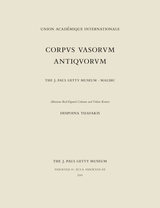
This new fascicule of the CVA—the tenth issued by the J. Paul Getty Museum and the first ever to be published open access—presents a selection of Attic red-figure column and volute kraters ranging from 520 to 510 BCE through the early fourth century BCE. Among the works included are a significant dinoid volute krater and a volute krater with the Labors of Herakles that is attributed to the Kleophrades Painter.
The free online edition of this open-access catalogue is available at www.getty.edu/publications/cva10/. Also available are free PDF, EPUB, and Kindle/MOBI downloads of the book, CSV and JSON downloads of the object data, and JPG downloads of the catalogue images.
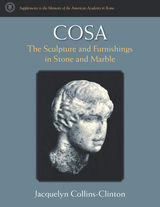
READERS
Browse our collection.
PUBLISHERS
See BiblioVault's publisher services.
STUDENT SERVICES
Files for college accessibility offices.
UChicago Accessibility Resources
home | accessibility | search | about | contact us
BiblioVault ® 2001 - 2024
The University of Chicago Press









